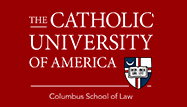Abstract
Are the Due Process and Equal Protection clauses interconnected? Justice Kennedy in Obergefell v. Hodges, the Supreme Court case holding the fundamental right to marry includes the right to a same-sex marriage, stated that they are profoundly connected in that each clause “may be instructive as to the meaning and reach of the other.” But exactly what instruction each doctrine might afford the other, Justice Kennedy did not say. An earlier Supreme Court decision, Plyler v. Doe, also suggested a connection, when the Court held unconstitutional a Texas statute baring funding for the education of undocumented children. But there too the Court never explained what the connection was or whether the two doctrines must always be understood as operating together. As a consequence, lower courts and the Supreme Court itself are left without much guidance when deciding future cases seeking to expand the range of protected interests. In his Article, Vincent Samar offers a solution to this problem by subsuming fundamental rights doctrine and Equal Protection analysis under a broader theory of the person, understood collectively, that utilizes personhood’s centrality of freedom and well-being to further clarify how the two doctrines operate together so as to aid the development of criteria for resolving future cases seeking to expand the range of protected interests.
Recommended Citation
Vincent J. Samar,
At the Intersection of Due Process and Equal Protection: Expanding the Range of Protected Interests,
68
Cath. U. L. Rev.
87
(2019).
Available at:
https://scholarship.law.edu/lawreview/vol68/iss1/8
Included in
Constitutional Law Commons, Fourteenth Amendment Commons, Religion Law Commons, Supreme Court of the United States Commons



